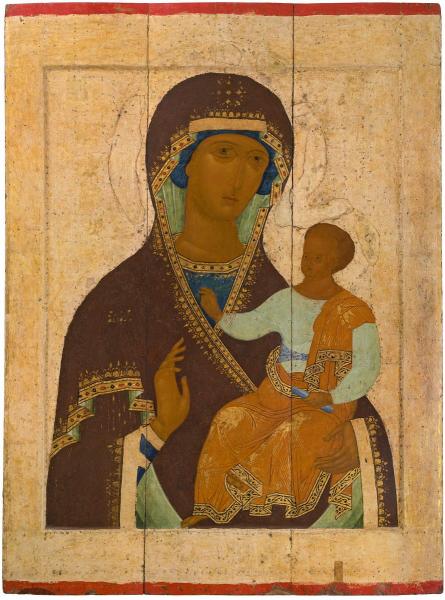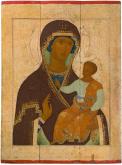The Mother of God Hodigitria
Circa 1502–03
- tempera and gesso on wood. 141,2 x 105,7 x 3
- ДРЖ-3095
Пост. 1968 из Кирилло-Белозерского музея-заповедника по приказу МК РСФСР- Происходит из местного ряда иконостаса церкви Рождества Богородицы Ферапонтова монастыря
-
Сведения о реставрации:
Раскрыта в ГРМ: Перцев Н.В. (1963–1965)
- Period Old Russian Art
- CategoryBiblical Subject
- Share
This work depicts the Hodigitria (Greek: «she who points the way”) type of Mother of God, named after the famous Byzantine icon from the Hodegon Monastery in Constantinople. The Hodegon icon depicted the Virgin en face, turned to the worshippers and holding the Child, who raises His hand in blessing. Mary points to Christ as the path to salvation. Many different versions of the Mother of God Hodigitria have been painted over the centuries. In Russia, for example, there was the Mother of God Hodigitria of Smolensk, Tikhvin, Jerusalem and Georgia. While differing in the details, all versions retain their common elements of austerity and majesty. This particular variant of the Mother of God Hodigitria has no direct analogies prior to the seventeenth century, when works with a similar iconography known as the Mother of God Hodigitria of the Seven Lakes were popular in Russian art. Russian Museum: From Icons to the Modern Times. Palace Editions, St Petersburg, 2015. P. 55.

